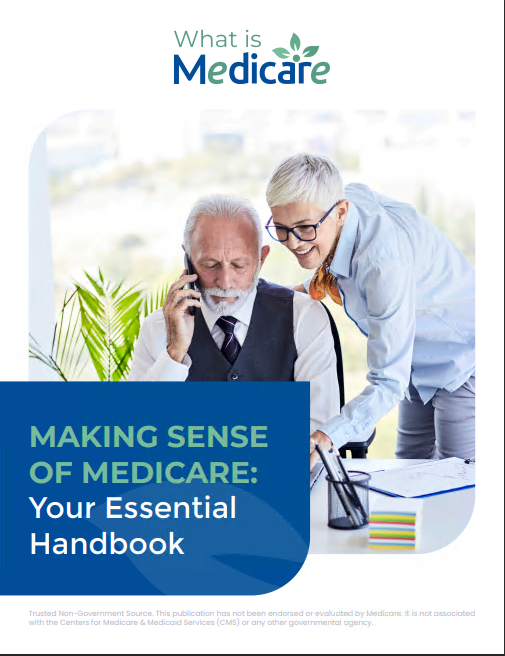Key Takeaways
-
The worst Medicare Advantage plans often rely on low premiums, restrictive networks, and misleading marketing to attract enrollees during enrollment season.
-
Knowing what to look for—including star ratings, cost structure, and provider access—can help you avoid plans that fail when you need them most.
Why the Worst Plans Still Get Picked
Every year during the Medicare Open Enrollment period, from October 15 to December 7, you’re given the opportunity to switch your Medicare coverage. And every year, some of the worst Medicare Advantage plans are selected by unsuspecting beneficiaries. Why? Because these plans are often marketed in ways that highlight their most attractive features while glossing over significant weaknesses.
The truth is, not all Medicare Advantage plans are created equal. While many offer comprehensive coverage, there are others that underdeliver on care, overburden you with out-of-pocket costs, and make it difficult to access the providers you trust.
Understanding how to spot these red flags can save you money, time, and stress.
How Star Ratings Can Mislead
The Centers for Medicare & Medicaid Services (CMS) uses a star rating system to evaluate Medicare Advantage plans, ranging from 1 to 5 stars. In theory, this should help you compare the quality of different plans. But in practice, even a 3-star or 3.5-star plan can have serious drawbacks.
Plans with lower star ratings (below 3.5) tend to have:
-
Higher complaint rates from members
-
Poor customer service and delayed appeals processing
-
Worse performance on preventive care and chronic condition management
The issue is, many beneficiaries don’t look past the initial star rating or understand what the metrics actually reflect. A 3-star plan may still be heavily promoted, especially in counties with limited plan competition.
What Makes a Medicare Advantage Plan “Worst”
Several characteristics often show up in plans that fail to meet enrollees’ expectations. These include:
Limited Provider Networks
Some plans cut costs by drastically narrowing their provider network. You may sign up thinking your doctor is included, only to find they were dropped mid-year or that referrals outside the network are rarely approved. Plans with weak networks may:
-
Deny access to top-tier specialists
-
Make it difficult to get second opinions
-
Force long travel times for care
Overreliance on Prior Authorization
Poorly rated plans tend to require prior authorizations for a wide range of services. This can result in delays or denials of care, particularly for:
-
Advanced imaging (MRI, CT scans)
-
Durable medical equipment
-
Outpatient surgeries
CMS has placed stricter rules on how plans use prior authorizations as of 2024, but issues persist in 2025 with plans slow to adapt or with inconsistent enforcement.
High Out-of-Pocket Costs
While premiums might be low, some plans shift costs to enrollees through:
-
High copayments for specialists and emergency care
-
Large coinsurance percentages for inpatient hospital stays
-
Maximum out-of-pocket limits nearing the CMS-allowed thresholds (up to $9,350 for in-network services in 2025)
These hidden costs only become apparent when you actually use your coverage.
Limited Coverage for Supplemental Benefits
Many enrollees are drawn in by flashy add-ons like dental, vision, hearing, or gym memberships. The worst plans often promise these benefits but deliver them with severe restrictions. For instance:
-
Limited provider choices for dental or vision
-
Annual caps on services like cleanings or hearing aids
-
Inadequate transportation benefits
Poor Customer Service
Low-rated plans typically struggle with customer service metrics, such as:
-
Long hold times
-
Difficulty reaching someone who can resolve issues
-
Repeated denials without clear explanations
This becomes especially problematic if you’re managing chronic conditions or complex care needs.
How Marketing Masks the Weaknesses
Medicare Advantage plans are allowed to advertise widely, and many of the worst ones spend the most on advertising during enrollment season. They emphasize surface-level benefits:
-
Free extras (with strings attached)
-
No referrals needed (while still limiting the provider list)
-
Lower premium (but with high service costs)
They often omit the fine print, such as the number of services that need prior approval or how narrow the doctor network actually is. You’re shown the bright front of the plan, not the hard reality when care is needed.
Plan Switching and the Illusion of Choice
Even though you’re allowed to switch plans annually, many people stay with a bad plan out of inertia. Some beneficiaries only realize how limited their plan is after they need care, and by then, it’s often too late to switch. The Annual Enrollment Period is short and decisions made in haste can last for a full calendar year.
In 2025, CMS does offer a Medicare Advantage Open Enrollment Period from January 1 to March 31, but you can only switch plans once during that time. If you make another wrong choice, you’re locked in.
The Role of CMS Oversight
CMS has increased oversight of low-performing plans. In some cases, plans with fewer than 3 stars for three consecutive years may be removed from the market. However, these removals don’t always happen fast, and problematic plans can remain available while still meeting minimum standards.
Also, in rural or underserved areas, fewer plan options may make these lower-rated plans the only available option. This lack of competition keeps bad plans afloat.
What You Should Always Check Before Enrolling
When reviewing Medicare Advantage options, look beyond the sales brochures. Ask these critical questions:
-
What is the plan’s current CMS star rating? Anything below 3.5 deserves extra scrutiny.
-
Are your preferred doctors and hospitals in-network? Confirm this with the provider and the plan.
-
What’s the prior authorization policy? Understand how many services require it and how delays are handled.
-
What’s the total cost of care? Don’t just consider premiums. Look at deductibles, copays, and coinsurance.
-
What are the out-of-pocket maximums? In 2025, these can be as high as $9,350 in-network. Check if the plan is close to this.
-
Are the extra benefits actually usable? Look for provider directories and benefit caps for dental, vision, or hearing coverage.
A Note About Dual-Eligible Plans
If you qualify for both Medicare and Medicaid, you may be eligible for a Dual Eligible Special Needs Plan (D-SNP). Some of these plans are valuable, but others are marketed aggressively despite offering limited networks and poor coordination. Pay special attention to how care is coordinated and whether Medicaid benefits are integrated properly.
Don’t Rush Your Decision
The worst outcomes happen when you rush through plan selection based on a flyer or a phone call. Take the time to compare. Review the Annual Notice of Change (ANOC) each fall, especially if you’re already enrolled in a plan. Benefits and costs can shift dramatically year to year.
Start comparing plans as early as October 1 when new plan details are available for preview. That gives you two full weeks before enrollment opens to gather information and talk with a professional.
Why Working With a Licensed Agent Helps
Licensed agents can help you compare plans based on your:
-
Location
-
Health conditions
-
Preferred providers
-
Prescription drug needs
Unlike general advertisements, an agent provides tailored advice. They can explain:
-
Hidden costs
-
Network details
-
Prior authorization burdens
And help you avoid choosing a plan that only sounds good on paper.
Smart Enrollment Starts With Better Awareness
In 2025, Medicare Advantage remains a good option for many beneficiaries. But some plans continue to underperform, even as they meet minimum CMS standards. Being aware of what makes a plan problematic can protect you from high costs, delayed care, and dissatisfaction.
If you’re unsure where to start, a conversation with a licensed agent listed on this website can help you review your options and feel confident about your coverage.








